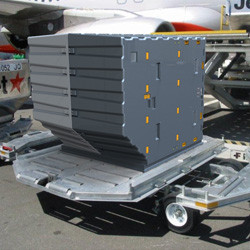Better aviation cargo containers
The EU-funded SAFEGUARD project aimed to develop an improved device. To begin, the eight-member research group reviewed existing technological solutions for improving aviation cargo security without increasing weight. Objectives included developing a prototype of a lightweight, hard-sided ULD having a stacking density greater than 4:1. The project also planned to simulate a sealing system, based on electronic locking technology and including radio frequency identification (RFID). The two-year project concluded in September 2013. After a phase of preparatory research, the project pursued three avenues of technical development. These were: design and optimisation of a folding polymer-reinforced ULD; development of a prototype electronic sealing system; and exploration of power harvesting. The project pursued an advanced nesting concept, leading to patentable improvements to ULD design. The new concept yields a stacking ratio of 3:1, which addresses the global imbalance of ULD availability. The use of reinforced polymers reduces weight of the secure design while also reducing maintenance costs. Team members also studied RFID systems, focusing on international legislation, approved products and transmission protocols. A comprehensive analysis of regulations and technical criteria resulted in the decision to adopt a multi-frequency approach. The multiple frequencies available for listening and response mean a design able to be used anywhere. The project team also developed a handheld reader with integrated Wi-Fi and 3G connectivity. The device allows RFID tracking information to be exchanged and stored. The ID information interfaces with a project-developed on-board locking system, which includes a new 12C protocol integrated by project partners. The hand-held device uses an electronic Dallas iButton key for users not wishing to establish an RFID system. Power optimisation tests were performed to increase battery life. The group also developed a passive energy-harvesting device, incorporating information tracking and security sealing applications. Developments include a low-power data logger that records the time of impacts. The information can be stored for long periods and interfaced to a computer. SAFEGUARD helped to improve the technologies used to secure aviation cargo. The developments also mean considerable cost savings for airlines.







